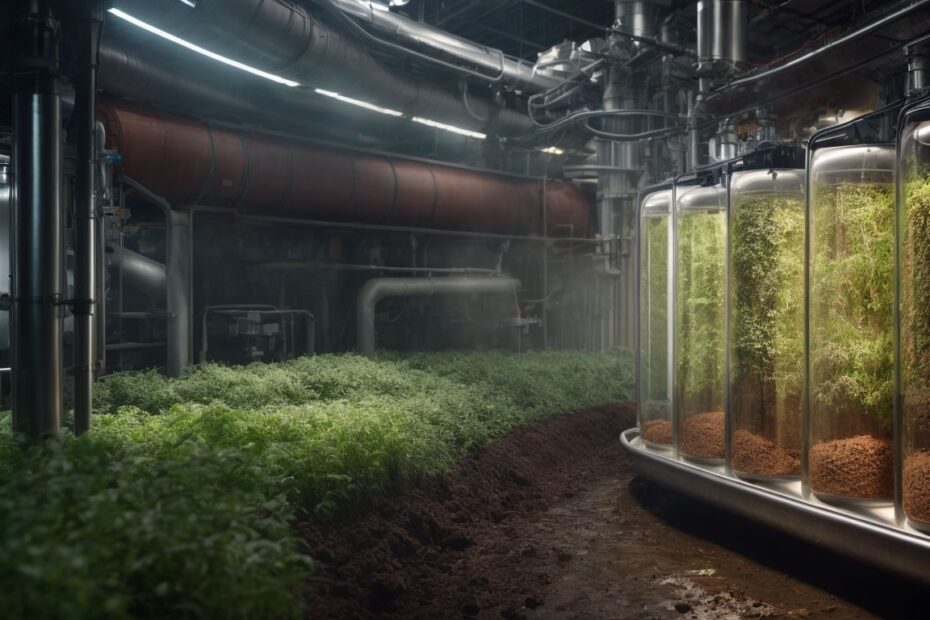Fermentation, a natural metabolic process that has been utilized for centuries, plays a crucial role in energy production and the creation of various beneficial products.
In this comprehensive article, we will delve into the intricacies of fermentation, exploring its definition, different types and its role in energy production. We will examine the products, benefits and potential risks associated with fermentation, shedding light on its wide-ranging impact.
We will explore how fermentation can be harnessed for energy production, including the steps involved and the various methods for utilizing fermentation to generate energy. Join us as we unravel the fascinating world of fermentation and its profound implications for energy production and beyond.
What is Fermentation?
Fermentation is a metabolic process that converts carbohydrates, such as sugars and organic matter, into energy, biofuels, and other valuable products through the action of microorganisms.
It plays a vital role in energy production as it generates ATP, the primary energy currency of cells, through glycolysis and subsequent pathways.
Fermentation is a key process in biofuel generation, where microorganisms convert biomass into biofuels like ethanol and butanol. Specific metabolic pathways and enzymes, such as the Embden-Meyerhof pathway and alcohol dehydrogenase, are involved in this intricate process.
The use of biomass as a substrate for fermentation highlights the renewable energy aspect of the process, promoting sustainable practices and reducing dependence on fossil fuels. This approach also holds environmental significance as it contributes to mitigating greenhouse gas emissions and fostering a greener, more sustainable energy landscape.
What Are the Different Types of Fermentation?
Fermentation can occur through various types, including anaerobic fermentation involving bacteria and yeast, and each type follows distinct metabolic pathways based on the substrate utilized.
In anaerobic fermentation, bacteria and yeast play crucial roles in different metabolic processes. For example, lactic acid bacteria are involved in the conversion of glucose to lactic acid, commonly found in yogurt and pickled vegetables.
On the other hand, yeast is responsible for alcoholic fermentation, where sugars are converted into ethanol and carbon dioxide. This process is commonly used in the production of beer and wine.
Understanding the specific metabolic pathways of these organisms is essential for unlocking the potential of fermentation in various industries.
How Does Fermentation Produce Energy?

Fermentation produces energy through a series of metabolic reactions that convert substrates into valuable products, generate metabolic flux, and provide a source of energy for various applications.
It involves the conversion of carbohydrates, such as glucose, into pyruvate through glycolysis, followed by the reduction of pyruvate to produce ethanol or lactate in anaerobic conditions. This process yields ATP, the primary energy currency of the cell.
Fermentation pathways produce other useful byproducts such as organic acids, alcohols, and gases. Different microorganisms carry out specific fermentation pathways, contributing to the diversity of useful products that can be obtained through fermentation processes.
What Are the Products of Fermentation?
The products of fermentation include ethanol, biogas, and various metabolic byproducts that result from the microbial action on specific substrates, leading to a range of valuable outputs.
These diverse outputs play a crucial role in different industries and applications. Ethanol, for example, is a key component in the production of alcoholic beverages, fuel, and pharmaceuticals. Biogas, which mainly consists of methane and carbon dioxide, serves as a renewable energy source for heating and electricity generation.
Metabolic byproducts such as organic acids and enzymes have significant applications in the food, pharmaceutical, and biotechnology sectors. The specific metabolic reactions involved in fermentation contribute to the sustainable production of these valuable resources.
What Are the Benefits of Fermentation?

Fermentation offers numerous benefits, including increased nutrient availability, improved digestion, and a boosted immune system, while also contributing to production efficiency through advanced fermentation technology.
This natural process involves the breakdown of organic substances by microorganisms, creating an environment rich in beneficial bacteria and enzymes. The resulting products, such as fermented foods and beverages, not only enhance the flavor and shelf life but also promote better nutrient absorption, especially for essential nutrients like vitamins and minerals.
Through advanced fermentation technology, industries can optimize the process, reducing production time and minimizing waste, ultimately leading to more sustainable and cost-effective operations.
Increases Nutrient Availability
Fermentation enhances nutrient availability by promoting the breakdown of organic matter through increased metabolic activity and optimization of fermentation processes, leading to improved nutrient accessibility.
This process involves the transformation of complex organic compounds into simpler forms, making them more readily absorbed by plants and beneficial microorganisms.
The increased metabolic activity during fermentation breaks down complex molecules such as carbohydrates, proteins, and fats, releasing essential nutrients like nitrogen, phosphorus, and potassium.
Through the optimization of fermentation processes, the efficiency of nutrient release and uptake is maximized, leading to enhanced soil fertility and improved plant growth.
Improves Digestion
Fermentation improves digestion by breaking down complex organic matter through the action of beneficial microorganisms, supported by specific fermentation techniques that enhance the digestive process.
This breakdown of organic matter makes nutrients more accessible to the body, aiding in the absorption of essential vitamins and minerals. The microorganisms involved in fermentation also produce enzymes that further assist in the digestion of food.
Specialized fermentation techniques, such as controlled temperatures and specific bacterial cultures, influence the production of probiotics, which promote a healthy gut environment. This combined action of microbial breakdown and specialized techniques results in improved digestion and overall gut health.
Boosts the Immune System
Fermentation offers numerous benefits for supporting immune system health. It plays a crucial role in producing beneficial compounds and byproducts, such as probiotics, organic acids, and vitamins, which contribute to immune function enhancement.
Ongoing research in fermentation is uncovering its potential to modulate the immune system and improve host defense mechanisms. This ancient process is finding diverse applications in immune support, including the development of fermented foods, beverages, and supplements.
The relationship between fermentation and immune health continues to be an exciting area of study, with promising implications for overall well-being.
What Are the Risks of Fermentation?

Despite its benefits, fermentation poses risks such as food spoilage and the potential for harmful bacterial growth, highlighting the drawbacks and inherent risks associated with the process.
It’s crucial to be vigilant during fermentation to prevent the development of undesirable microorganisms, as they can lead to foodborne illnesses. Improper fermentation conditions can result in the production of toxic byproducts.
The potential for spoilage and the need for meticulous monitoring make it essential for individuals engaging in fermentation to adhere to strict hygiene and safety protocols. Understanding the potential risks and taking necessary precautions is key to harnessing the benefits of fermentation without compromising food safety.
Food Spoilage
One of the risks associated with fermentation is food spoilage, which presents a challenge within the fermentation industry and requires adherence to strict standards to mitigate potential spoilage issues.
This risk of spoilage can have significant impacts on the fermentation industry, leading to financial losses and reputational damage for businesses. To address these challenges, it is crucial for producers to implement rigorous quality control measures and adhere to strict guidelines for fermentation processes.
Ensuring the highest standards of cleanliness, temperature control, and monitoring for contamination is essential to prevent food spoilage and maintain the quality and safety of fermented products.
Harmful Bacterial Growth
Another risk of fermentation is the potential for harmful bacterial growth, prompting the establishment of regulations and policies to address and mitigate the risks posed by such microbial contamination.
This risk emerges from the conditions within fermentation processes that can inadvertently facilitate the proliferation of harmful bacteria. The presence of pathogenic microorganisms, such as Salmonella and E. coli, is a primary concern. Inadequate sanitation practices, improper temperature management, and suboptimal pH levels can all contribute to the potential for harmful bacterial growth.
As a result, the implementation of comprehensive regulations and stringent monitoring protocols becomes vital to safeguarding public health and ensuring the safety of fermented products. These regulations often encompass meticulous hygiene standards, regular testing procedures, and stringent quality control measures to minimize the risk of microbial contamination.
How Can Fermentation Be Used for Energy Production?
Fermentation can be utilized for energy production through processes such as bioethanol production, biogas generation, and hydrogen production, demonstrating its versatility and potential as a sustainable energy source.
These different applications of fermentation showcase the diverse ways in which it can contribute to sustainable energy production.
Bioethanol production involves the conversion of biomass, such as agricultural residues or dedicated energy crops, into ethanol, which can be used as a biofuel.
Biogas generation utilizes organic waste, such as food scraps or animal manure, to produce a renewable energy source.
Hydrogen production through fermentation processes presents an exciting avenue for clean energy generation, with the potential to reduce reliance on fossil fuels.
Bioethanol Production
Bioethanol production is a key application of fermentation, involving the conversion of substrates into ethanol through metabolic engineering and specific fermentation conditions, contributing to sustainable energy solutions.
The significance of bioethanol production through fermentation lies in its role in providing a renewable and environmentally friendly alternative to traditional fossil fuels. This process supports the reduction of greenhouse gas emissions and helps to mitigate the impact of climate change. Bioethanol production contributes to the utilization of agricultural and organic waste materials, making it a sustainable and resource-efficient method for ethanol production.
The optimization of fermentation conditions, such as temperature, pH, and nutrient supply, is crucial for achieving high ethanol yields and maintaining the efficiency of the process.
Biogas Production
Biogas production through fermentation involves the use of specialized bioreactors and fermentation systems, tapping into diverse fermentation resources to generate renewable energy in the form of biogas.
This process leverages organic waste, agricultural residues, and energy crops, which are then placed in bioreactors where microorganisms break down the organic matter through anaerobic digestion, producing biogas. Biogas, primarily composed of methane and carbon dioxide, can be utilized as a clean energy source for heating, electricity generation, or even as fuel for vehicles. The flexibility and scalability of biogas production make it a promising avenue for sustainable energy.
Hydrogen Production
Fermentation is utilized for hydrogen production through metabolic regulation and specialized fermentation techniques, showcasing its potential as a sustainable method for generating hydrogen as an alternative energy source.
This process involves the microbial conversion of organic compounds into hydrogen and carbon dioxide, with the assistance of specific enzymes and pathways. Metabolic regulation plays a critical role in controlling the conversion process and ensuring the efficient production of hydrogen.
Specialized fermentation techniques, such as dark fermentation and photofermentation, enable the generation of hydrogen gas under controlled conditions. With growing concerns about environmental sustainability, the use of fermentation for hydrogen production presents an eco-friendly and renewable option for energy generation.
What Are the Steps Involved in Fermentation for Energy Production?
- Selecting the right substrate
- Inoculating with the appropriate microorganisms
- Implementing bioprocessing techniques, supported by comprehensive fermentation analysis
This process begins with the careful selection of a substrate that serves as the food source for the microorganisms, allowing them to produce energy through fermentation. Once the substrate is chosen, the next critical step is inoculation, where the selected microorganisms are introduced to the substrate under controlled conditions.
Bioprocessing techniques such as agitation, aeration, and temperature control are then employed to optimize the fermentation process. Carrying out comprehensive fermentation analysis ensures that the entire process is monitored and adjusted for maximum efficiency and productivity.
Choosing The Right Substrate
Selecting the right substrate is crucial in fermentation, with a focus on leveraging waste materials and advanced fermentation technologies to optimize fermentation strategies and resource utilization.
By carefully considering the substrate, it’s possible to harness the potential of organic waste streams and agricultural by-products, turning them into valuable resources. Advanced strategies such as co-culturing and metabolic engineering enable the efficient utilization of these substrates, leading to higher yields and reduced environmental impact.
This emphasis on sustainable practices not only benefits the fermentation process but also contributes to the circular economy by transforming waste into high-value products, aligning with the principles of green and renewable technologies.
Inoculation And Incubation
The process involves inoculating the chosen substrate with specific microorganisms, providing the necessary conditions for incubation, fostering metabolic activity and supporting fermentation developments.
During inoculation, carefully selected microorganisms are introduced to the substrate, such as yeast for alcohol production or bacteria for dairy fermentation. The incubation process requires specific environmental conditions, including optimal temperature and pH levels, to promote the growth and metabolic activity of the microorganisms.
This allows for the conversion of substrates into desired end products through fermentation. As the microorganisms multiply and metabolize, the fermentation process leads to the production of various compounds, contributing to the development of the final fermented product.
Separation And Purification Of Products
Following fermentation, the separation and purification of products, such as ethanol yield, are essential steps, requiring specialized techniques to isolate and refine the valuable outputs.
These critical steps involve various methods, such as distillation, which separates the ethanol from other components. Fractional distillation further refines the ethanol, ensuring a high-purity yield. Molecular sieves are used to absorb water and impurities, enhancing the quality of the ethanol.
Advanced chromatography techniques are employed for the precise separation of desired compounds. These specialized techniques play a crucial role in maximizing the purity and quality of the fermentation products, particularly the ethanol yield.
Frequently Asked Questions
What is fermentation for energy production?
Fermentation for energy production is a process that converts organic compounds into energy, such as ATP, in the absence of oxygen. It is commonly used to produce energy from carbohydrates found in food and drinks.
How does fermentation for energy production work?
Fermentation for energy production works by breaking down glucose, a simple sugar, into smaller molecules. These molecules are then converted into ATP, the energy currency of cells, through a series of chemical reactions carried out by microorganisms.
What are the benefits of using fermentation for energy production?
One of the main benefits of using fermentation for energy production is that it can produce energy without the need for oxygen. This makes it a useful process for organisms that live in environments with low oxygen levels, such as certain bacteria and yeast.
What types of organisms use fermentation for energy production?
Many different types of organisms use fermentation for energy production, including bacteria, yeast, and some types of fungi. In fact, fermentation is a common metabolic process in microorganisms and is essential for their survival.
Can fermentation be used to produce energy on a large scale?
Yes, fermentation can be used on a large scale to produce energy. In fact, it is a commonly used process in industries such as food and beverage production, where large amounts of organic materials are converted into energy through fermentation.
Are there any potential drawbacks to using fermentation for energy production?
One potential drawback of using fermentation for energy production is that it can produce byproducts that may be harmful to the environment. These byproducts, such as carbon dioxide and ethanol, must be carefully managed to prevent negative impacts on the environment.

